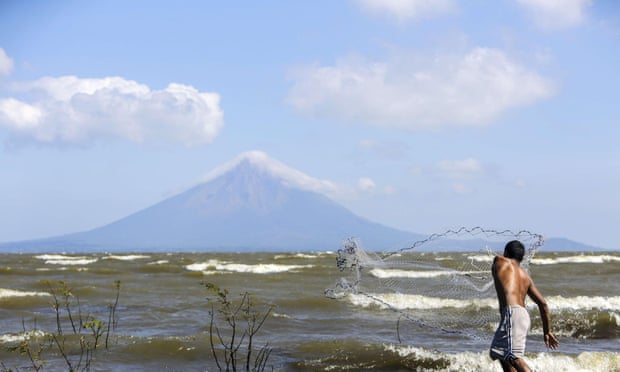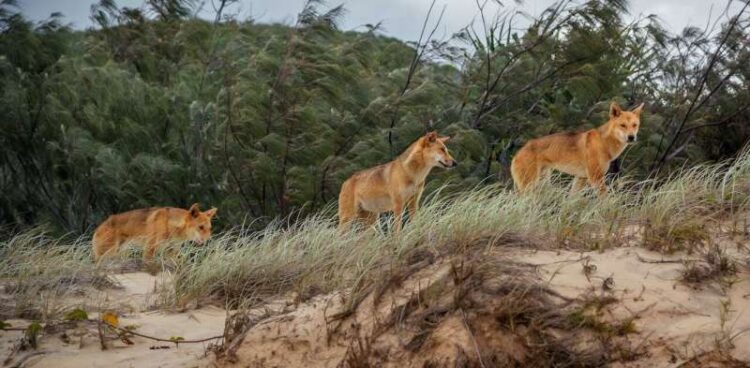A Chinese company has launched work on a $50bn canal across Nicaragua, an ambitious rival to the Panama canal that sceptics dismiss as a pipe dream and environmentalists say will wreck the country’s ecosystem.
The Chinese telecoms magnate behind the canal, Wang Jing, inaugurated the project at a ceremony in the southern town of Rivas that was moved forward by several hours after anti-canal activists called protests.

“Today we are going to begin initial work on the Nicaragua canal with the support of the government, the understanding and strong support of the Nicaraguan people,” Wang said in Rivas, the epicentre of three months of demonstrations against the canal.
Hundreds of protesters blocked the highway connecting the region to the capital Managua, despite what community leader Octavio Ortega called a “militarised” response from security forces in the region.
In Managua, where President Daniel Ortega was due to hold a separate ceremony in the evening, environmentalists called for the release of the project’s feasibility studies.
Construction will begin with the first access roads at the mouth of the Brito river on the Central American country’s Pacific coast.
Wang’s Hong Kong Nicaragua Development Investment (HKND) company says 300 workers will build the roads and a port, the first of 50,000 people who will be hired to construct the huge 280km (174-mile) waterway connecting the Pacific Ocean and the Caribbean Sea.
The firm estimates the project will take five years.
That is half the time it took the United States to complete the Panama canal 100 years ago, considered one of the greatest engineering feats of the 20th century.
Nicaragua, which fought Panama then to host the first canal across Central America, has now re-emerged as a modern-day rival.
The canal route crosses Lake Nicaragua, the largest freshwater reserve in Central America, and runs through rainforest and at least 40 villages before terminating at the mouth of the Punta Gorda river in the southern Caribbean, where another port will be built.
The project also includes an international airport and a free-trade zone with residential and tourism facilities.
Both ports and the canal will be designed to handle the modern mega-ships favoured by global shipping firms, which can carry up to 25,000 containers.
That dwarfs the current capacity of the 80km Panama canal to the south, which can only handle ships carrying 5,000 containers.
A $5.25bn expansion of the Panama canal, scheduled for completion in early 2016, will enable it to handle ships carrying 12,000 containers.
Ortega, the left-wing president who has ruled Nicaragua for 18 of the past 35 years, hopes the new canal will make his country the richest in Central America.
But environmentalists warn the canal could destroy sensitive habitats and cloud Lake Nicaragua’s waters.
Three billion cubic metres (106bn cubic feet) of earth will have to be excavated for the canal, which will be between 230 and 520 metres wide (750-1,700 feet) and 30m deep, allowing it to handle ships of up to 400,000 tonnes.
The project will also displace 30,000 farmers and indigenous people from the Rama and other ethnic groups who live along the canal route.
Nicaragua has kept the canal’s technical, environmental and financial studies secret.
Some opponents condemn the project as a white elephant in the making.
The contract conditions, which allow HKND to operate the canal for 100 years, have also drawn criticism.
Congress passed a law in 2013 giving Wang hiring and land-expropriating powers and exempted his company from local tax and commercial regulations.
Wang, 42, heads more than 20 companies, including Xinwei Telecom Enterprise Group, which controls Chinese state telecoms firm Datang Telecom Technology & Industry Group.
He set up HKND in November 2012 and won the licence to build the canal in June 2013 with no competition.
We invite you to share your opinion whether the Nicaraguan interoceanic canal should go ahead? Please vote and leave your comments at the bottom of this page.
If you think that it is irresponsible for this project to move forward prior to the completion of the environmental and social assessment, please sign the petition:
Nicaragua, Is a New Canal Worth the Sacrifice?
The editorial content of this article was first published by The Guardian.






Leave a Reply